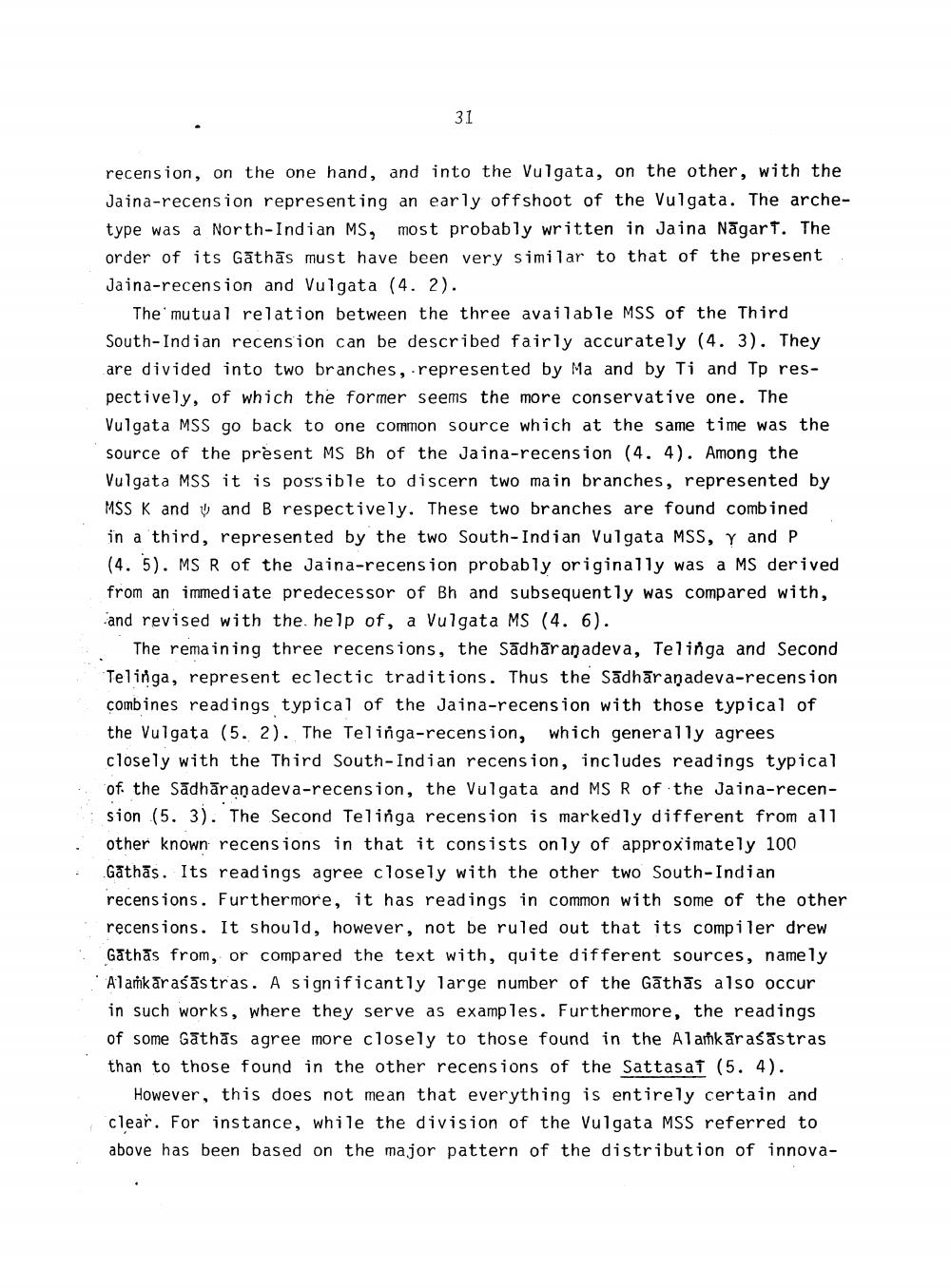________________
recension, on the one hand, and into the Vulgata, on the other, with the Jaina-recension representing an early offshoot of the Vulgata. The archetype was a North-Indian MS, most probably written in Jaina Nāgart. The order of its Gathās must have been very similar to that of the present Jaina-recension and Vulgata (4. 2).
The mutual relation between the three available MSS of the Third South-Indian recension can be described fairly accurately (4. 3). They are divided into two branches, represented by Ma and by Ti and Tp respectively, of which the former seems the more conservative one. The Vulgata MSS go back to one common source which at the same time was the source of the present MS Bh of the Jaina-recension (4. 4). Among the Vulgata MSS it is possible to discern two main branches, represented by MSS K and ♡ and B respectively. These two branches are found combined in a third, represented by the two South-Indian Vulgata MSS, Y and P (4. 5). MS R of the Jaina-recension probably originally was a MS derived from an immediate predecessor of Bh and subsequently was compared with, and revised with the help of, a Vulgata MS (4. 6).
The remaining three recensions, the Sadhāranadeva, Telinga and Second Telinga, represent eclectic traditions. Thus the Sadhāraṇadeva-recension combines readings typical of the Jaina-recension with those typical of the Vulgata (5. 2). The Telinga-recension, which generally agrees closely with the Third South-Indian recension, includes readings typical of. the Sadhāraṇadeva-recension, the Vulgata and MS R of the Jaina-recension (5. 3). The Second Telinga recension is markedly different from all other known recensions in that it consists only of approximately 100 Gathās. Its readings agree closely with the other two South-Indian recensions. Furthermore, it has readings in common with some of the other recensions. It should, however, not be ruled out that its compiler drew Gathās from, or compared the text with, quite different sources, namely Alankaraśāstras. A significantly large number of the Gathās also occur in such works, where they serve as examples. Furthermore, the readings of some Gathās agree more closely to those found in the Alankāraśāstras than to those found in the other recensions of the Sattasaf (5. 4).
However, this does not mean that everything is entirely certain and clear. For instance, while the division of the Vulgata MSS referred to above has been based on the major pattern of the distribution of innova




